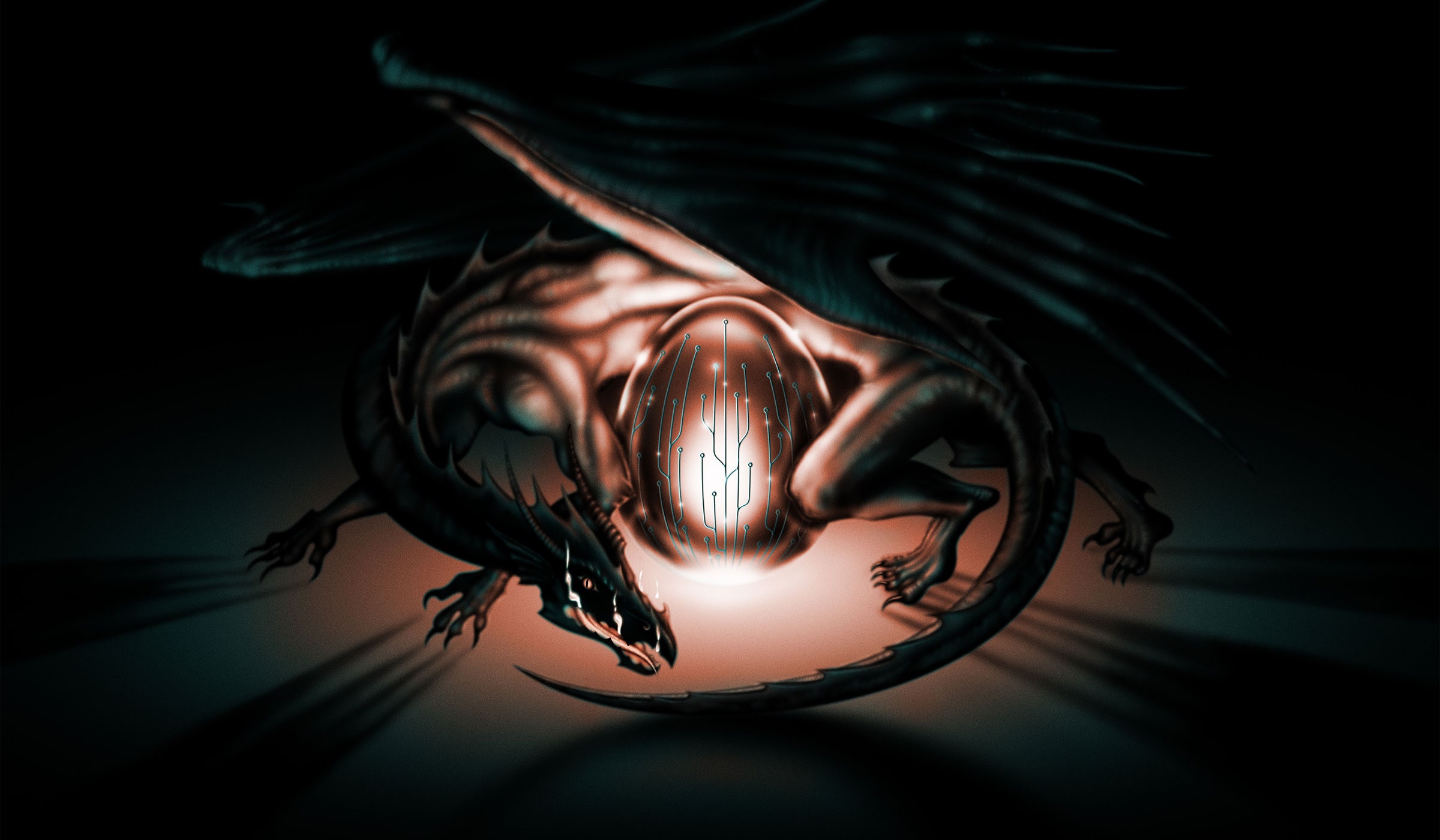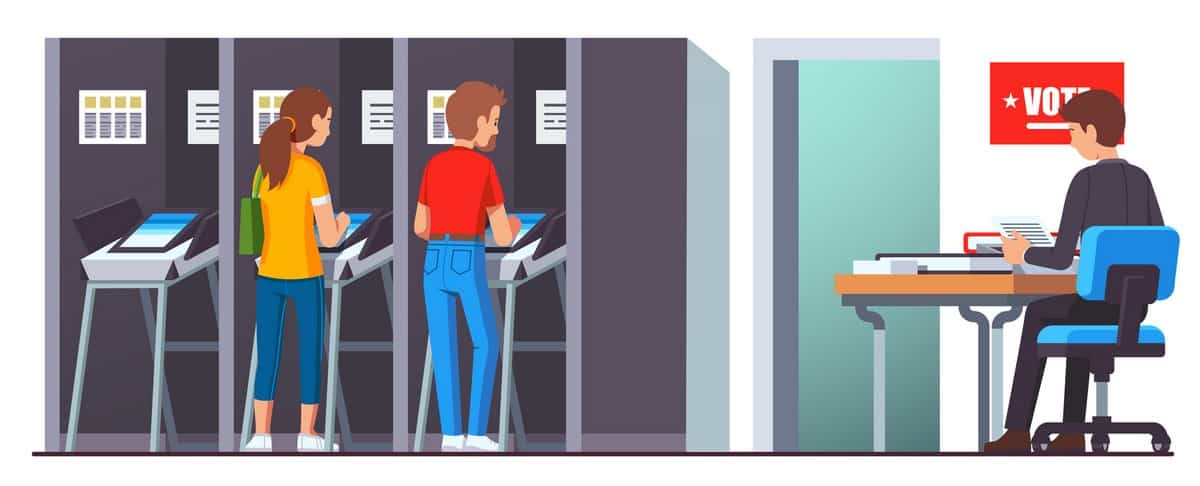Moqadi Mokoena had been feeling uneasy all day. When he’d left his home on the outskirts of Johannesburg, South Africa, for his job as a security guard, he’d had to turn around twice, having forgotten first his watch and then his cigarettes. He had reason to be nervous. His supervisor had assigned him to join a squad protecting an electrical substation where, just two days earlier, four other guards had been stripped naked and beaten with pipes by gun-wielding thieves. Now, on this day in May of 2021, Mokoena and a fellow guard were at that substation, peering tensely through their truck’s windshield as a group of armed men approached.
Mokoena pulled out his phone and called his wife, the mother of their 1-year-old daughter. He told her about the gang coming toward him. “I’m feeling scared,” he said. He didn’t have a gun himself. “I think they are the same ones who attacked our colleagues.”
“Call your supervisor!” she told him.
Minutes later, the men opened fire with at least one automatic weapon. Mokoena’s partner jumped out of the vehicle but was cut down by bullets. A third nearby guard dove for cover, shot back at the thieves, then ran for help. When he returned with the supervisor, they found Mokoena and his partner dead. Police later said the criminals made off with about $1,600 worth of copper cable.
“We face these dangers every day,” the surviving guard later told a local journalist. “You don’t know if you’ll return home when you leave for duty.”
In most places, power companies are a pretty dull business. But in South Africa they are under a literal assault, targeted by heavily armed gangs that have crippled the nation’s energy infrastructure and claimed an ever-growing number of lives. Practically every day, homes across the country are plunged into darkness, train lines shut down, water supplies cut off, and hospitals forced to close, all because thieves are targeting the material that carries electricity: copper.
The battle cry of energy transition advocates is “Electrify everything.” Meaning: Let’s power cars, heating systems, industrial plants, and every other type of machine with electricity rather than fossil fuels. To do that, we need copper—and lots of it. Second to silver, a rarer and far more expensive metal, copper is the best natural electrical conductor on Earth. We need it for solar panels, wind turbines, and electric vehicles. (A typical EV contains as much as 175 pounds of copper.) We need it for the giant batteries that will provide power when the sun isn’t shining and the wind isn’t blowing. We need it to massively expand and upgrade the countless miles of power cables that undergird the energy grid in practically every country. In the United States, the capacity of the electric grid will have to grow as much as threefold to meet the expected demand.
A recent report from S&P Global predicts that the amount of copper we’ll need over the next 25 years will add up to more than the human race has consumed in its entire history. “The world has never produced anywhere close to this much copper in such a short time frame,” the report notes. The world might not be up to the challenge. Analysts predict supplies will fall short by millions of tons in the coming years. No wonder Goldman Sachs has declared “no decarbonization without copper” and called copper “the new oil.”
As the energy transition gathers speed, the value of copper has also soared. In the past four years, the price of a ton of copper has shot from about $6,400 to more than $9,000. That, in turn, has made electrical wiring, equipment, and even raw metal fresh from the mines into juicy targets for thieves. All around the world, hundreds of millions of dollars’ worth of the metal has been stolen—and countless lives have been lost. With the possible exception of gold, no other metal has caused so much death and destruction.
Most of the world’s copper, of course, is produced and sold by legitimate companies. But even the legal copper industry has inflicted tremendous harm. From the western United States to South America to central Africa, copper mining has left colossal pits full of toxic waste and has fouled enormous swaths of land and waterways.
The risk of more disasters is in some ways getting worse, because most of the world’s richest and most easily accessed copper deposits have by now been mined. “All the low-hanging fruit has been picked,” says Scott Dunbar, a Canadian former mining engineer. The quality of the remaining ore in many major mines—that is, the percentage of metal within the rock—is falling fast. That means ever larger tracts of land have to be torn up to extract the same amount of copper, generating ever larger amounts of waste.
The new frontier for copper is central Africa. Investment has been pouring in since the early 2000s, in answer to the howling demand for raw materials from China’s growing economy. Most of the action is in the Democratic Republic of the Congo, a vast nation two-thirds the size of Western Europe that is rich with copper as well as diamonds, gold, cobalt, and other minerals. Mining supplies around 80 percent of the country’s foreign earnings. Little of that filters down to its people, however. Most Congolese subsist on less than $3 a day.
Early on the scene in the DRC was Chicago-born billionaire Robert Friedland, one of modern mining’s most idiosyncratic moguls. At Oregon’s Reed College in the early 1970s, Friedland became close friends with a like-minded fellow student named Steve Jobs. Both of them were entranced by Eastern religions and spirituality. “On Sunday evenings Jobs and Friedland would go to the Hare Krishna temple on the western edge of Portland,” writes Walter Isaacson in his biography of Jobs. “They would dance and sing songs at the top of their lungs.” They both traveled to India and were devotees of a famous Hindu guru. They also shared a fondness for hallucinogenic drugs. In fact, when Friedland arrived at Reed, he was on parole following a conviction for possession of 24,000 hits of LSD.
In 1974, Friedland moved to an apple farm his uncle owned near Portland. As the journalist Henry Sanderson writes in his book Volt Rush:
The farm became a hippy commune where groups of young people from the Hare Krishna temple worked the apple orchard, meditated, and ate vegetarian food together. Friedland took the name of Sita Ram Dass and looked “like a Caucasian Krishna.” Jobs, who had dropped out of Reed, worked at the orchard, helping to produce cider. Pretty soon, however, Friedland started operating the commune as a business, according to Jobs.
The man who would later give the world the iPhone soon left, disenchanted by Friedland’s “very materialistic” impulses.
By the early 1980s Friedland had teamed up with some Vancouver-based financiers and moved into the world of mining, hustling for small gold outfits. He made headlines in 1992 when a Colorado gold mine he had previously overseen (as its parent company’s CEO) leaked toxic heavy metals into a nearby watershed, earning him the nickname “Toxic Bob.” In the meantime he had also discovered a major gold deposit in Alaska and an even bigger nickel deposit in Canada, which he later sold for more than $3 billion. Friedland has been a major player in the industry ever since. (He also has a sideline in movies, helping to produce Crazy Rich Asians and other films. Another fun Friedland fact: This summer, he bought a scenic California estate from Ellen DeGeneres for a trifling $96 million.)
Friedland has been involved in the DRC since 1996, when he met Laurent Kabila, then the leader of a rebel movement. As Sanderson tells it, “Friedland went on TV to defend Kabila’s advance to power, and in return got 14,000 square kilometers of land outside the copper mining town of Kolwezi.” The area sits in the heart of a phenomenally rich mineral belt stretching across the DRC and south into Zambia. Friedland’s Ivanhoe Mines company found an enormous, high-grade copper deposit near the DRC’s border with Zambia and in 2021 started production at a colossal new mine.
Dubbed the Kamoa-Kakula mine, it is a joint venture with a Chinese company—one of many that are heavily involved throughout the DRC’s mining industry. China refines and consumes far more copper than any other country, and it relies on foreign suppliers for most of it. So when the DRC began opening up to foreign investment, China pounced. Chinese companies have since supplied billions of dollars in infrastructure support to the DRC in exchange for far-ranging mining rights.
Friedland is a peerless pitchman for copper. “We simply cannot continue to exist as a species without a lot more copper, especially if we want to reduce hydrocarbon consumption or if we want to electrify the world’s transportation fleet,” he told an industry conference in Santiago, Chile, in 2022. “There is no alternative.” Kamoa-Kakula, which is still being expanded, is already the world’s third-biggest copper mine.
The number-one producer of raw copper, however, is on the other side of the planet from the DRC. Chile has held that title for decades and currently supplies nearly a quarter of the world’s raw copper. Copper has brought enormous wealth to the country—as well as despoliation, dispossession, and violence
Large-scale mining began there more than a century ago, when a US company took control of a site in northern Chile called Chuquicamata, where indigenous people had been digging up copper for centuries. For a time, it was the world’s biggest open-pit mine. Working conditions were grueling and strikes frequent. Among those struck by the harshness of the place was Ernesto “Che” Guevara, who visited Chuquicamata in March 1952 and wrote in his Motorcycle Diaries about “the graveyards of the mines, containing only a small share of the immense number of people devoured by cave-ins, silica and the hellish climate of the mountain.”
When Chileans elected socialist Salvador Allende as president in 1970, one of his first moves was to nationalize the country’s copper mines, including Chuquicamata. The mines’ American owners were furious. Three years later, Allende was overthrown in a US-favored military coup.
Today, Chuquicamata is run by Chile’s state-owned copper company, Codelco. The mine complex sprawls along the lower reaches of a range of hills in the Atacama desert. It’s one of the driest regions on the planet, and it looks the part—miles of sand and rock with barely a speck of vegetation, bounded in the distance by the snow-capped Andes. The pit itself is gargantuan: more than a mile wide, 2 miles long, and most of a mile deep. It’s the center of a shambling complex of buildings and roads teeming with house-sized trucks, hulking machinery, and towering chimneys, all of it swathed in dust and smoke like an industrial suburb of Mordor.
The mine’s impact on the surrounding landscape is even greater. The shock waves extend in every direction. Mountainous heaps of tailings, candy-striped with layers of gray and brown minerals, sprawl away for miles. They could easily be mistaken for hills, matching as they do the size of the naturally occurring ones around them, except for their flat tops and overly tidy shapes. The trucks ferrying waste rock to them look like insects in comparison. A settling pond, its polluted water held in by berms of bulldozed earth and rock, covers an area the size of Manhattan.
And then there’s the damage you can’t see. The mine—and others nearby—draw huge amounts of water from the aquifers and streams of the Atacama. Leonel Salinas, president of the village of Lasana, a modest collection of small houses about 30 miles from Chuquicamata, says mining is sucking away what little water the area has. Cropland is drying up, forcing the mostly indigenous farmers to move away to the cities. “We’re losing our cultural landscape,” he says. “We’re not against modernity and development. But the burdens need to be equitably shared.” Dina Pannier, president of the nearby farming town of Chiu Chiu, feels the same. “There used to be beautiful springs and wetlands here. They’ve disappeared. The other regions get the money, but we here are the ones who pay the price.”
The treasures these mines produce are magnets for some astonishingly brazen criminals. By the light of the full moon, bandits in Toyota Tundra pickups roll up alongside trains that are hauling copper slabs from the mines high in the Atacama down to the coast. With perhaps a whispered prayer to the spirits of Butch Cassidy and the Sundance Kid, the bandits leap aboard the copper cars, slice through the ropes securing the 180-pound slabs, toss them into the beds of the speeding trucks, and disappear into the night.
The problem is so acute that the Chilean national police have set up a special copper task force. But trains were still being robbed regularly when I visited Chile in 2022. And not just trains, for that matter. In January of 2023, a team of thieves hit the country’s main seaport, overpowered a handful of workers, and made off with a dozen containers full of Codelco’s copper—more than $4 million worth.
No one knows exactly how much copper is stolen every year across the world. Thieves typically sell their wares to no-questions-asked scrapyards and recyclers, who strip off cable coatings and other nonmetallic materials and then shred or melt down the copper. Anyone can do it: The metal can be melted with blowtorches or small furnaces you can buy on Amazon. There are plenty of online videos that can walk you through the process. Once rendered into generic form, stolen copper can be mixed with legally obtained metal. At that point it’s easy to sell into the regular market, its origin essentially impossible to trace.
It’s safe to say, however, that the amount stolen each year is many, many millions of dollars’ worth—possibly billions. In one particularly audacious theft in 2023, nearly $200 million worth of copper and other metals was lifted from Aurubis, Europe’s largest producer. The biggest heists, at least in the US, are often inside jobs. In 2013, police shut down a ring that had ripped off as much as $80 million worth of copper ingots from an Arizona mine. Prosecutors said that workers in on the scheme would open the gates for trucks driven by their confederates, who loaded them up with raw copper and drove right back out. The metal was sold to recyclers in California, who blackened it to make it look like scrap and then shipped it to China. Unraveling the plot took nerve. At one point, a company rep from the mine found a severed goat’s head nailed to his door.
Most American copper thieves, however, are small-time opportunists drawn to a laughably easy score. So much copper is just left out in the open. It doesn’t take much skill or daring to tear out wiring in an abandoned building, break open an air conditioner sitting behind an apartment block, or snatch a manhole cover on a quiet suburban street. Thousands of copper thefts are reported each year. The booty includes fire hydrants, a 3,000-ton bell, a bust of Orville Wright, and at least one urn containing human ashes.
The cost of fixing the damage often far exceeds the value of the stolen metal. Ripped-out cables have shut down drinking water supplies in Hawaii, streetlights in Missouri, airport runway lights in Washington, and whole subway lines in New York City. The US Department of Energy has estimated that copper theft causes $1 billion worth of damage every year to facilities and businesses considered critical infrastructure.
Then there’s the shocking number of lives lost. Again, no one knows the exact numbers, but just from scanning through 10 years or so of local news articles I found dozens of reports of Americans who were fatally electrocuted while trying to steal live copper wire. And at least one security guard who was murdered trying to stop one of those thefts.
In South Africa, though, widespread poverty, ineffective police, and soaring metal prices have turned copper theft into a major industry. Mines are rich targets, even those that don’t extract copper. Their subterranean networks of shafts and tunnels need power to run lights and digging equipment. That power, of course, is carried by miles of electric cable, conveniently left unguarded and out of sight. On any given day, hundreds of desperate people are risking their lives to get that metal.
They’re known as zama zamas—roughly meaning “take a chance” in Zulu. These illegal miners clamber down mine shafts on ropes or handmade ladders, then make their way into the tunnels. There, they set up underground camps. Hundreds of zama zamas may be living underground at any given time, some spending weeks or even months down in the tunnels.
It’s an astonishingly common and deeply disruptive crime. A single mining company, Implats, reported around 800 incidents of cable theft in 2021. Stolen cables have forced companies to shut down mines for weeks at a time.
It’s also a phenomenally dangerous way to earn a living. Illegal miners have died by the dozens in gas explosions, floods caused by heavy rains, and other accidents. In 2021, a mining company sealed off a ventilation shaft that a group of zama zamas was using to supply their compatriots underground. Desperate, the miners blew open the hole with explosives. Police and private security guards wound up in a pitched battle with the escaping zama zamas. At least eight people were killed.
Above ground, gangs have hijacked dozens of trucks carrying copper to South Africa’s ports, making off with millions of dollars’ worth of metal. Meanwhile, the electric grid is being plundered so often and so thoroughly that the whole country is affected. In 2021, the railway company Transnet reported that more than 1,000 kilometers of overhead power cables had been stolen. A recent report from the Global Initiative Against Transnational Organized Crime notes that “while two security guards may have proved a deterrent in the past,” gangs “now come in groups of 20 or 30 and are often heavily armed, with ‘spotters’ shooting at patrol vehicles.” Cell phone towers, water pipelines, and electric power stations are similarly under assault. Thieves disguise themselves as workers dispatched to tear up underground cables, or bribe actual power company employees, or just show up brandishing guns and use four-wheel-drive trucks to rip cables out of the ground.
Ordinary South Africans pay a heavy price. Children have died falling into manholes after their covers were stolen. In addition to disrupted train lines and power, water, and phone service outages, a Johannesburg hospital was kept closed after someone stole its copper pipes, cables, and electrical equipment. Police believe rivalry between gangs involved in stealing cables spurred two mass shootings that left 21 people dead in the Johannesburg area in 2022. And a number of security guards trying to protect some company’s copper have also been wounded or killed—like Moqadi Mokoena, the Johannesburg guard shot to death in his truck.
The wave of copper theft has sparked a backlash of vigilante violence in some impoverished townships. Suspected thieves have been assaulted, beaten and occasionally lynched. “This is the only language that criminals understand,” a resident of a town where an alleged cable thief was beaten to death told local media. In March of 2023, four electric company workers were killed in a Johannesburg suburb by a mob that mistook them for cable thieves.
South African authorities and mining companies are flailing for solutions. Railway and power companies are replacing some copper wire with aluminum or copper-manganese alloy wires, but nothing matches copper’s conductivity and resistance to corrosion. In a desperate move to discourage theft, the government slapped a ban on scrap copper exports in late 2022, hoping to shut off access to the overseas markets into which much stolen copper is sold. The thieves, however, barely seem to have noticed. There are still plenty of domestic buyers, and smugglers shipping abroad apparently have little trouble getting the metal through the country’s underpoliced ports. In the US and other countries, authorities have tried cracking down on sketchy scrapyards and tightening regulations on buyers, with little success.
A more effective approach to the copper theft epidemic might be to shift the focus from the supply to the demand. It won’t be easy. But consider that there are more than 1 billion automobiles on the worlds’ roads; swapping every one of them for an electric car will require massive amounts of copper to make all those cars and the grid to fuel them. Of course, if we built out public transit, subsidized ebikes, and developed more walkable cities, we wouldn’t need so much copper.
Whether we do those things or not, one thing is indisputable: We need to pull off an epochal shift to renewable energy. But we also need to recognize that the carbon-free, sun- and wind-powered future we love to imagine comes with its own threats to people and the planet.
From Power Metal: The Race for the Resources That Will Shape the Future, by Vince Beiser, to be published on November 19, 2024 by Riverhead, an imprint of Penguin Publishing Group, a division of Penguin Random House LLC. Copyright (c) 2024 by Vince Beiser.











